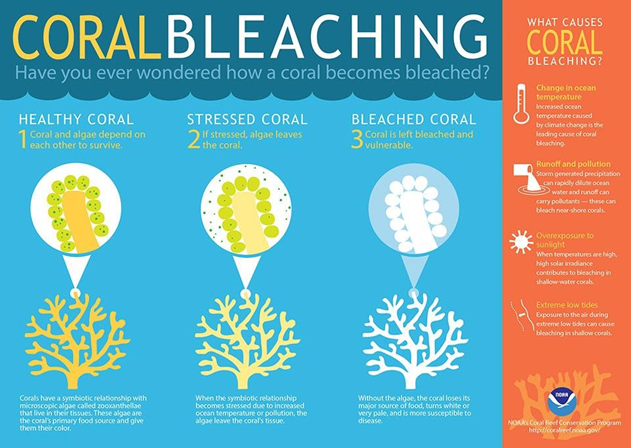

Scientists have warned that the Great Barrier Reef will face a critical period of heat stress over the coming weeks; following the most widespread coral bleaching the natural world has ever endured.
Context
Scientists have warned that the Great Barrier Reef will face a critical period of heat stress over the coming weeks; following the most widespread coral bleaching the natural world has ever endured.
About
- The Great Barrier Reef is the world's largest coral reef system composed of over 2,900 individual reefs and 900 islands stretching for over 2,300 kilometres over an area of approximately 344,400 square kilometres.
- It is home to about 3,000 coral reefs, 600 continental islands, 1,625 type of fish, 133 varieties of shark and rays and 600 types of soft and hard corals.
- The reef is located in the Coral Sea, off the coast of Queensland, Australia.
- The Great Barrier Reef can be seen from outer space and is the world's biggest single structure made by living organisms.
- This reef structure is composed of and built by billions of tiny organisms, known as coral polyps.
- It supports a wide diversity of life and was selected as a World Heritage Site in 1981.
- Carbon pollution is causing unprecedented damage to our Great Barrier Reef. Warming ocean temperatures, a sign of climate change, is associated with the deteriorating health of the Reef.
What is coral bleaching?
- The stunning colours in corals come from marine algae called zooxanthellae, which live inside their tissues.
- This algae provide the corals with an easy food supply thanks to photosynthesis, which gives the corals energy, allowing them to grow and reproduce.
- When corals get stressed, from things such as heat or pollution, they react by expelling this algae, leaving a ghostly, transparent skeleton behind. This is known as ‘coral bleaching’.
- Some corals can feed themselves, but without the zooxanthellae most corals starve.
- Warmer water temperatures can result in coral bleaching. When water is too warm, corals will expel the algae (zooxanthellae) living in their tissues causing the coral to turn completely white.
- Not all bleaching events are due to warm water.

Can coral recover from bleaching?
- In some instances, corals can recover from bleaching.
- If conditions return to normal and stay that way corals can regain their algae, return to their bright colours and survive.
- However prolonged warmer temperatures and other stressors, like poor water quality, can leave the living coral in a weakened state.
- It can struggle to regrow, reproduce and resist disease – so is very vulnerable to coral diseases and mortality.
- It can take decades for coral reefs to fully recover from a bleaching event, so these events mustn't occur frequently.
- If we continue burning fossil fuels at our current rate then severe bleaching events are likely to hit reefs annually by the middle of the century.
- This would be devastating for coral reefs as they would have no chance to recover.
The World Heritage Committee is scheduled to review the status of the Great Barrier Reef at a meeting in June in China, with the potential to place the reef on its “in danger” list.

